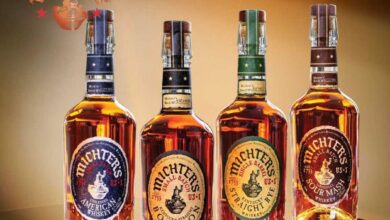How Virginia’s Early Mountain Vineyards Is Redefining Petit Manseng

📝 usncan Note: How Virginia’s Early Mountain Vineyards Is Redefining Petit Manseng
Disclaimer: This content has been prepared based on currently trending topics to increase your awareness.
Maya Hood White in the vines at Early Mountain Vineyards.
Early Mountain Vineyards
Maya Hood White, winemaker at Virginia-based Early Mountain Vineyards, is no stranger to accolades. In 2024, she was nominated Wine Star Award Winemaker of the Year by Wine Enthusiast, and was a VinePair Next Wave Awards Winemaker of the Year finalist. She has been at the helm of Early Mountain’s winemaking program since 2022, but had actually joined the team in 2014.
Winemaking wasn’t originally her chosen path. In fact, it kind of chose her. Established in the field of Mathematics, she left her job because she felt something else was calling to her. She felt the need to get out of a cubicle and into the dirt—winemaking, it turns out, was her soul’s work.
With that, her background came into play even more at Early Mountain. Not only was she excelling at her position as a winemaker but was also put in charge of some of the more obscure parts of the wine program.
“We’ve always tried to prioritize some experimental approach. And that’s always been a chunk of my responsibilities,” she says. But, it was a chance encounter in New York’s Finger Lakes region that was the start of her most experimental and unique wine to date—a lees aging program in which she ages wine on spent yeast cells from previous vintages.
“We were just popping into places,” she recalls. “One of the winemakers [at a small winery called Bellwether] mentioned a [Riesling] made on old lees and asked if we wanted to taste it. While unconventional to some, I was excited to try it.”
The moment stuck. She describes what was in the glass, “looked like soft serve—thick and cloudy,” but the flavor was something else entirely. “The wine had this texture and complexity that I couldn’t stop thinking about,” she says. So, on the ride home, she planned to try it with one 228-liter barrel of 2017 Petit Manseng that had been held back from the main blend.
The choice to use Petit Manseng wasn’t random. White needed a grape that could handle the microbial load—something sturdy and structured, with high acid and alcohol to naturally ward off spoilage.
“Even after going through malolactic fermentation, our Petit Manseng still has higher acidity than most grapes,” she explains. “It’s tough, and it creates a hostile environment for the wrong kinds of microbes. That’s key.”
So, instead of cleaning that barrel, she immediately had fresh juice from the 2018 harvest poured into it, letting the existing lees stay behind. A year later, she scaled up the project to a 1,000-liter barrel, allowing even more room for this ongoing experiment. Each year, the previous vintage’s wine is racked off just before harvest, and fresh juice is added immediately—keeping the lees wet and active.
Today, that same barrel, lovingly dubbed the “perpetual lees barrel” holds the lees of eight consecutive Petit Manseng vintages, quietly transforming Early Mountain’s Petit Manseng into something truly unique. “I love this project because it has such an impact on the wine,” she says. “We’re trying to build dimension and complexity in multi-faceted ways.”
Of course, nothing about the perpetual lees project is easy. Because she likes to harvest Petit Manseng in multiple passes for greater complexity—“three picks” or in some cases, “two picks,” as she calls them—she can’t barrel down the wine until all of the fruit is in and fermentations are complete. That means timing has to be precise and the lees have to be constantly monitored.
Still, she says, it’s worth it.
“The wine wouldn’t be the same without it. That barrel has become its own thing—it has its own fingerprint now,” she says.
But while wine geeks may get excited about terms like “autolytic character” and “manoproteins,” White is also quick to point out the consumer challenge.
“Sometimes I take a step back and think—this wine needs a lot of context,” she says. “Wine professionals get it. But for the average person? If they’ve never had something this acidic, this textural, it can be polarizing.”
However, that may no longer be a hurdle. The wine recently earned 95 points from Decanter in 2025. On the palate, the acidity shines while sophisticated flavors of lemon curd, dried pineapple and undertones of freshly baked bread dance through the mouth. The aged lees add a complexity and roundness that elevates the wine and Early Mountain’s commitment to the variety.
As the lees program enters its eighth year, White is looking ahead to expanding the program. She plans to add a second dedicated barrel and continue refining the process, block by block.
“It’s become part of our identity,” she says. “That barrel is alive. It holds not just yeast and juice, but memory, evolution, and experimentation. It’s messy, unpredictable—and it’s absolutely beautiful.”
One thing is clear: This isn’t just an experiment anymore. It’s tradition in the making.



